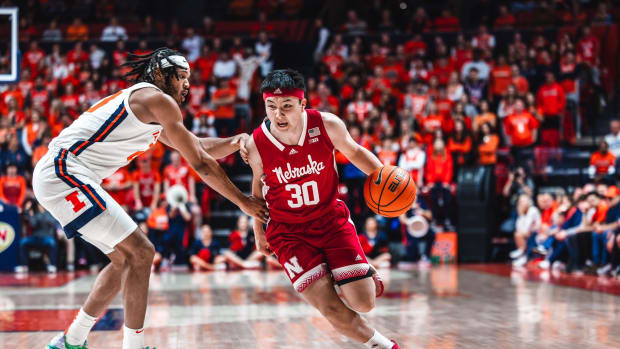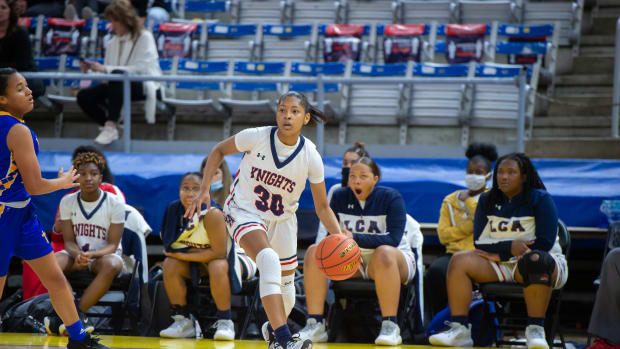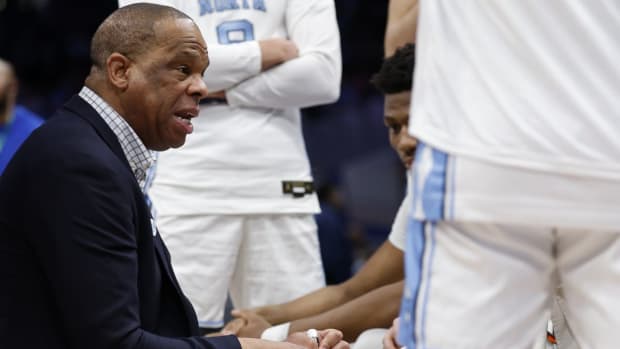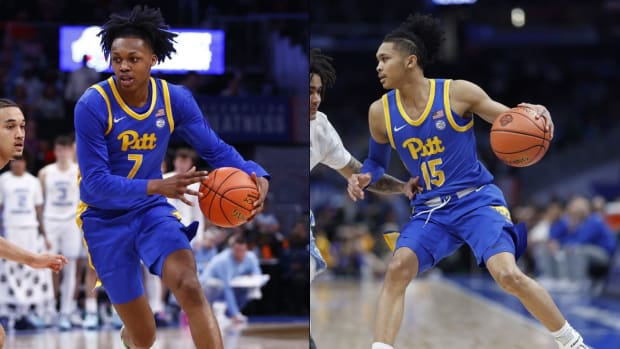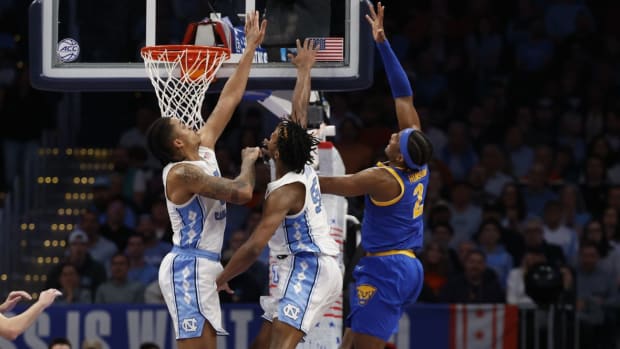Re-Ranking the 2019 Sweet 16: Who Looks Strongest After Two Rounds?
In the colorful history of Selection Sunday outrages, the 2019 NCAA tournament bracket release was met with limited furious fanfare. The soft bubble left only a few teams with legitimate snub cases. The No. 1 seeds were appropriately awarded to the ACC's three elite teams and Gonzaga. All four regions felt like they posed similarly challenging paths to the Final Four for their respective title contenders.
And for all that fairness, we were rewarded with one of the chalkiest first weekends ever, with 14 of the top 16 seeds still alive and all of the top 12 teams still dancing. UC Irvine's elimination at the hands of a red-hot Oregon team to cap Sunday's second-round action ensured that Gonzaga would be the Sweet 16's lone representative of a mid-major conference—and the Zags stopped being a "mid-major" well over a decade ago.
Despite all those predictable second-weekend participants, it's not like we didn't learn anything from two rounds of largely predictable outcomes. After processing a healthy allotment of blowouts and first-half scares alike, we've collected a little more data about the front-runners than we had this time a week ago. With the table set for a loaded Sweet 16 starting on Thursday night, it's time to re-rank the teams still standing.
1.
Gonzaga (No. 1 seed, West)
The Zags are the only No. 1 seed that didn’t play with its food in the first round, blasting Fairleigh Dickinson 87–49 before a nearly wire-to-wire win over Baylor. Brandon Clarke has thrived against inferior competition, but Gonzaga's talented frontcourt is in for a sharp degree of difficulty increase next weekend, with Florida State's stable of giants waiting before an Elite Eight matchup with one of the top two defenses in the country by kenpom.com's adjusted efficiency metrics, Michigan or Texas Tech. Junior forward Killian Tillie is still working back into the flow of the team, but he's attacking the rim like someone who isn't afraid of lingering effects from a torn ligament in his right foot that sidelined him for the end of the regular season. Gonzaga is playing like it took its WCC tournament final loss to Saint Mary's to heart.
2.
North Carolina (No. 1 seed, Midwest Region)
They may have taken a backseat to full-strength Duke and Virginia in the national title conversation during the season thanks to some puzzling non-conference losses, but the Tar Heels are a difficult national title contender to argue against in a tournament setting, where their breakneck pace and relentless rebounding can expose everyone but the elite of the elite teams. UNC hasn't even gotten much yet from dazzling freshman Coby White, who has looked more like a freshman this season against top-quality opponents. If he finds his sea legs after finishing with 17 points against Washington, and if five-star forward Nassir Little continues to assert himself, the Heels have no reason to be scared of anyone.
3.
Duke (No. 1 seed, East Region)
Top overall seed or no top overall seed, you can't flirt with disaster as much as Duke did this weekend and still enter the Sweet 16 as the scariest team in the country. The Blue Devils, one of the worst three-point shooting teams in Division I—329th out of 353, to be precise, with a season-long rate of 30.7%—shot over 40% during their two games in Columbia. If that mark dips in D.C., any one of the other three top seeds in the East can play Duke down to the wire the way UCF did on Sunday.
4.
Michigan State (No. 2 seed, East Region)
After failing to separate from Bradley until the final five minutes of their opening game, the Spartans needed less than five minutes to separate from Big Ten foe Minnesota in the second round. The back spasms that sidelined ace rebounder Jordan Murphy didn't help the Golden Gophers' cause, but Michigan State's 45–19 edge on the boards reflected just how locked in they were. The Spartans coughed it up 22 times against Minnesota, meaning their 20-point win could have easily been wider. Junior point guard Cassius Winston has raised his game to the point where you just assume his team's first-weekend blemishes will be taken care of as the stakes rise.
5.
Texas Tech (No. 3 seed, West Region)
The Red Raiders, owners of kenpom's No. 1 defense, have held their first two opponents under 60 points, and that streak may continue in the Sweet 16 against a Michigan team with limited consistent offensive options. Texas Tech's three-pointers have stopped falling the way they were during the late-season run that locked up a share of the Big 12 title, yet its first two tournament games have still been comfortable double-digit affairs by the midpoint of the second half. The razor-thin margin between the Red Raiders and its Sweet 16 opponent just below in these rankings is the scoring consistency that future lottery pick Jarrett Culver provides.
6.
Michigan (No. 2 seed, West Region)
The Wolverines have taken as much pressure as possible off their offense, allowed fewer points through the first two rounds than every Sweet 16 team except Kentucky, but will an elite team put more strain than Montana or Florida could on their offense-by-committee approach? Charles Matthews (22 points against Montana) and Jordan Poole (19 points against Florida) have each taken a turn carrying the scoring load, but it's hard to hang around during the second weekend when you aren't absolutely certain where the points are coming from. Keep an eye on 7'1" center Jon Teske, whose transformation into an offensive threat made Michigan look like the nation's best team in December and has double doubles in five of his last nine games. If the Wolverines make it to Minneapolis, Teske will have to play matchups with some ultra-athletic big men to a draw.
7.
Florida State (No. 4 seed, West Region)
The Seminoles' height remains a nightmare matchup in tournament settings and paints a jarring picture when placed next to most mid-major starting fives—especially with 6'10" leading scorer Mfiondu Kabengele (43 points so far this tournament) coming off the bench. Playing Gonzaga for the second straight tournament may actually work against Leonard Hamilton's squad, but there isn't a single team still standing that can push FSU around.
8.
Virginia (No. 1 seed, South Region)
Reasonable people can disagree on whether we should be concerned that Virginia got another scare from a No. 16 seed or encouraged that the Cavaliers ultimately shook their early-exit demons by pulling away from Gardner-Webb and then icing down Oklahoma. Now that the ACC regular season champions have settled into the tournament and cleared the low hurdle of avoiding national embarrassment, they could build up some momentum heading into the weekend—or overthink the opportunity in front of them.
9.
Auburn (No. 5 seed, Midwest Region)
The second-lowest seed still standing played unencumbered in a beatdown of Kansas after white-knuckling its first-round win over New Mexico State, and there may very well be no in-between for the Tigers this March. Auburn's seasoned backcourt is eager to turn each game into a three-point shooting contest, and while that may not be the most sustainable way to navigate the bracket, it's the only life the SEC champions know. Two unfamiliar buildings loom in Kansas City and Minneapolis, but the Tigers' playing style passed a big test in Salt Lake City.
10.
Houston (No. 3 seed, Midwest Region)
The Cougars will likely be betting underdogs in every game they play from here on, but the extracurricular activities that marked Sunday's win over Ohio State seem to indicate that they're ready to turn every game into a street fight. Corey Davis Jr. was one of the first weekend's best players; he'll need to keep putting up 20-plus points to apply pressure to opposing offenses.
11.
Tennessee (No. 2 seed, South Region)
The Vols let their guard down against No. 15 seed Colgate and lost a 16-point first-half lead before pulling away at last; they let their guard down against No. 10 Iowa and lost a (tournament-record-tying) 25-point first-half lead before pulling away at last in overtime. It could be written off as coasting if it hadn't happened multiple times against inferior competition in SEC play. Tennessee's grit in game-changing moments is undeniable, but its lapses in focus are inexcusable.
12.
Virginia Tech (No. 4 seed, East Region)
Versatile forward Kerry Blackshear dominated the Hokies' Feb. 26 win over Duke, which both teams played without their best player. Justin Robinson and Zion Williamson are very much back for Round Two, and they'll have an equal say in the outcome of a turnover battle that could prove to be the difference—the Hokies won that phase 6–12 in Blacksburg. If Virginia Tech sweeps Duke out of the tournament, it would appear to be a pretty rough matchup for the winner of LSU–Michigan State.
13.
Kentucky (No. 2 seed, Midwest Region)
Without PJ Washington—who was in a hard cast for the first and second rounds, leaving his status for the Sweet 16 up in the air—it becomes glaringly easy to spot who is and isn't a scoring threat in any given Kentucky lineup. That's fine when the Wildcats are playing unforgiving defense, but there are deeper three-point shooting teams on the horizon who might not have the historically bad afternoon Wofford star Fletcher Magee did on Saturday.
14.
Oregon (No. 12 seed, South Region)
The Ducks have put everything together on defense, with Kenny Wooten patrolling the middle and Ehab Amin creating headaches everywhere else, but the three other teams still alive for the South's Final Four spot are of a different offensive class than the victims of Oregon's current 10-game winning streak.
15.
Purdue (No. 3 seed, South Region)
Carsen Edwards can't stay this hot, can he? Purdue doesn't have the depth of playmakers most of the other teams on this list do and will need senior Ryan Cline to hit some threes on the few possessions when Edwards's shooting hand needs a rest. When everyone’s pitching in, the Boilermakers can throw defenses into chaos in much the same way Auburn can.
16.
LSU (No. 3 seed, East Region)
Like Tennessee, the Tigers have been playing with fire in their careless treatment of second-half leads—if Tremont Waters had been called for a travel on that game-winning lay-in, LSU had the look of a team ready to fade in overtime. Acting head coach Tony Benford's great challenge will be managing the foul situations of big men Naz Reid and Kavell Bigby-Williams, who desperately need to be a 40-minute presence in the paint from here on for the Tigers to have a chance.
















